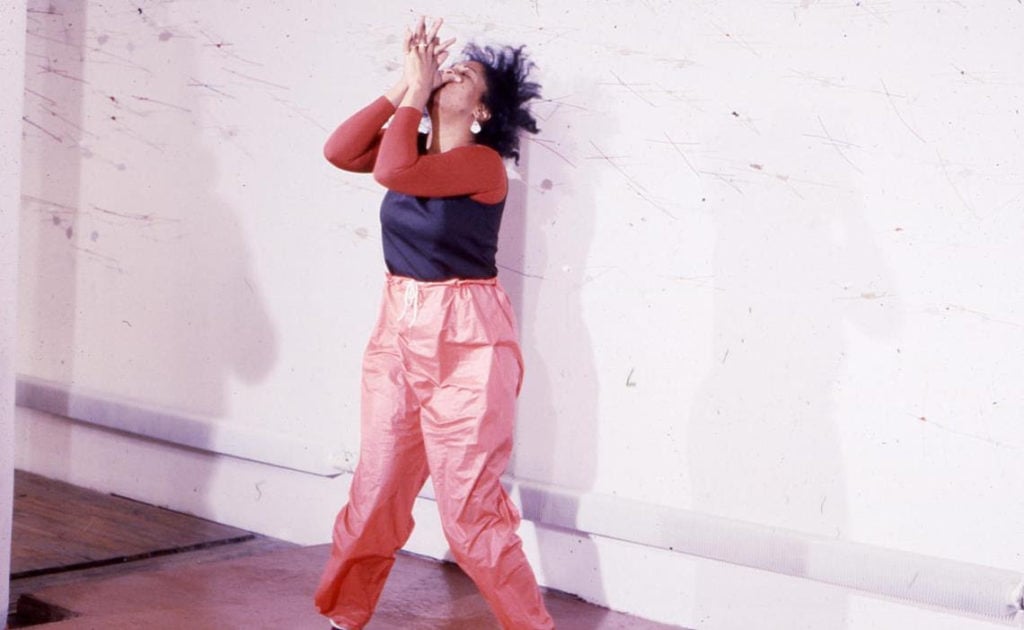Art World
Art Industry News: How a Generation of Black Gallerists Changed Art History + Other Stories
Plus, Italian museums are losing an estimated $566 million each week during lockdown and the Getty postpones events through August.

Plus, Italian museums are losing an estimated $566 million each week during lockdown and the Getty postpones events through August.

Artnet News

Art Industry News is a daily digest of the most consequential developments coming out of the art world and art market. Here’s what you need to know on this Tuesday, April 14.
Frye Art Museum Workers Claim Union Retaliation – Employees at the Frye Art Museum in Seattle gathered in a socially distanced picket line outside the institution on Friday to protest the termination of a third of the museum’s staff due to losses sustained from its shutdown. The protesters claim two representatives from the museum’s newly formed union were targeted while contract negotiations were underway. (Hyperallergic)
Italian Museums Are Losing €516 Million a Week – The ongoing closure of 358 national museums in Italy is resulting in a total loss of around €516 million ($566 million) a week, according to a new report. National museums account for 1.6 percent of the country’s GDP, and the cultural industry employs around 830,000 people. Cultural associations are asking the government in Italy, one of the nations hardest hit by the coronavirus, to offer a moratorium on tax payments, interest on loans, as well as compensation for exhibitions that were already in the works but unable to open. (Journal des Arts)
How Three Black-Owned Galleries From the 1960s Changed Art – T magazine’s entire new culture issue, centered on families formed by choice, happenstance, or proximity that went on to change the cultural landscape, is worth a careful read. One highlight is a feature on three galleries dedicated to black artists from the 1960s and ’70s, which are now being recognized as among the most influential of our time. Come for the exceedingly stylish photographs of the gallery’s founders and artists; stay for the thrilling tales of how Brockman Gallery and Gallery 32 of Los Angeles and JAM in New York fostered the careers of the 21st century’s most important figures, with little support from the mainstream art world at the time. (New York Times)
The Met’s 150th Anniversary Celebrations Are Interrupted – The Metropolitan Museum of Art in New York had spent years planning an elaborate suite of programming to celebrate its 150th anniversary this week, including a major exhibition, “Making the Met 1870–2020.” Instead, of course, its doors are closed and it is preparing for a massive budgetary shortfall. But it is still finding ways to celebrate—modestly—with online programming. “We’re quietly marking the 150th anniversary of this great institution,” says Daniel Weiss, the Met’s president. “We will get through this moment. The institution will endure. But it is not a moment to celebrate a birthday party, that’s for sure.” (Washington Post)
Berlin Galleries Move Art Week Online – Berlin has moved its art week online with an initiative titled “Not Cancelled Berlin,” which kicked off on April 11. The website, which aims to offer a virtual slice of the gallery-hopping experience, includes images of artworks, videos of conversations, and information about participating artists contributed by 16 galleries, including Eigen+Art, Klemm’s, Peres Projects, and neugerriemschneider. (Monopol, Artnet News)
Salon Art + Design Will Take Place as Usual in November – Most fair announcements in our inboxes these days are about cancellations or delays, so it was novel to receive word that New York’s Salon Art + Design fair is slated to take place as scheduled, from November 19 through 23, at the Park Avenue Armory. Organizers say they are watching the developments of the current crisis closely but, for now, have no plans to move the original dates. (Press release)
Photographer Floris Neusüss Dies at 88 – Floris Neusüss, a pioneer of cameraless photography known for his ghostly silhouettes, died on April 1 in Kassel, Germany at age 83. Neusüss’s most famous series, the “Nudogramms,” produced in the 1960s, features nude female forms rendered as surreal, haunting specters. (ARTnews)
Collector Ana Patricia Botín Elected to IMF Board – The Spanish art collector and chair of Santander bank, Ana Patricia Botín, has been named to the International Monetary Fund’s new advisory board. The board was established to respond to the economic impact the coronavirus crisis is having on the world. (IMF)
Getty Postpones Public Events Through August – The Getty has announced that it is postponing all of its public programming through the end of August because of California’s ban on large gatherings. Its two spaces have been shuttered since March 14. (ARTnews)
Conservators Update Digital Works for Today’s Browsers – The Guggenheim’s conservation team has been working with NYU’s department of computer science to help conserve computer-based art made for outmoded interfaces. Experts have been slowly updating digital artworks from 1998 onwards, and have just completed work on Mark Napier’s net.flag (2002) to make it accessible on today’s browsers. (TAN)
Oakland Artist Recreates Famous Works From Home – The lockdown has proven that people the world over are passionate about recreating famous artworks with simple household items—who knew? One of the latest (and most creative) contributions to the genre comes courtesy of Oakland artist Carrie Burch, who has developed an Instagram series, “imquARTantined,” in which she picks an iconic portrait off the Internet and remakes the scene at home, with a 30-minute self-imposed time limit. See the delightful fruits of her labor below. (San Francisco Chronicle)